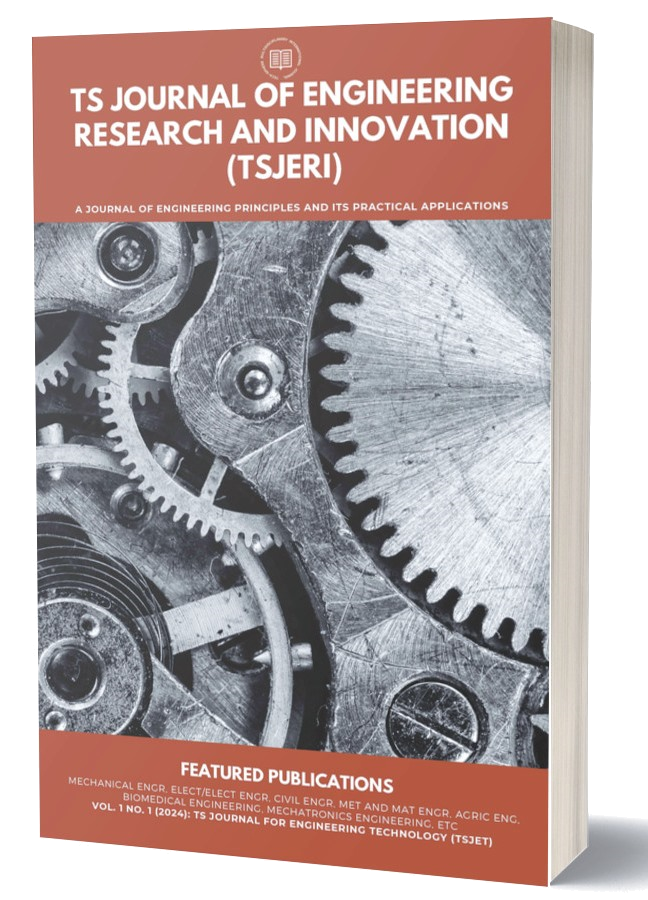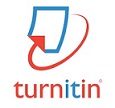Physio-Mechanical Properties of Ile-Oluji Cocoa Pod Husk Waste (CPHW) as a Partial Replacement of Cement in Concrete: Panacea for Sustainable Construction Material
Keywords:
Physio-Mechanical Properties, Cocoa Pod Waste, Partial Replacement, Concrete composite, Potential MaterialAbstract
This study investigates the viability of Cocoa Pod Husk Waste Ash [CPHWA] as a partial replacement for cement in concrete production due to the high cost of cement and its adverse environmental impacts in Ile-Oluji, Ondo State, Nigeria. The process involved the use of Concrete cubes which were produced with CPHWA at three different ages [7days, 14days, and 28days] with replacement levels of 0%,5%,10%, and 15%. The results show that a 5% replacement of CPHWA yielded concrete with moderate workability, while a 10% replacement achieved compressive strengths within the desired range of 20 N/mm² to 25 N/mm² after 28 days of curing. These findings suggest promising prospects for integrating CPHWA into concrete production, offering potential benefits for the construction industry and civil engineering projects in terms of cost-effectiveness and environmental sustainability.
References
Aberilla, J. M., Gallego-Schmid, A. and Azapagic, A. (2019). ‘Environmental sustainability of small-scale biomass power technologies for agricultural communities in developing countries’, Renewable Energy, 141, 493–506.
Agele, S.O and Agbona A.I. (2008). Effects of Cocoa Pod Husk Amendment on Soil and Leaf Chemical Composition and Growth of Cashew (Anarcardium occidentale L) Seedlings in the Nursery American Eurasian Journal of Sustainable Agriculture, 2(3): 219-224.
Agbona, A. I, Adebisi, S. L, Adebayo, S.A and Oladebeye, I.H. (2021). Growth response of oil palm (Elaeisguinnensis) to selected plant residues in Ile-Oluji rain forest zone of Nigeria. 39th Annual Conference of Horticultural Society of Nigeria ‘CRIN 2021’ held at Cocoa Research Institute of Nigeria on14th-18th November, 2021. Pp. 1125-1131.
Agbona, A.I, Oladebeye, I.H., and Akinlosoye, J.J. (2022). Response of browse plant (Glyricidia sepium) to some selected organic waste in Ile-Oluji, South Western Nigeria. 40th Annual Conference of Horticultural Society of Nigeria ‘HORTSON COAJ 2022’ held at College of Agriculture, Jalingo, (COAJ). Taraba State, Nigeria. between 6th -10th November, 2022. Pp 293-299.
Agbona, A.I, Oladebeye, I.H and Adebayo S.A (2023). Response of cocoa (Theobroma cacao, L) to different levels of organic waste in ile-oluji, south western nigeria. Journal of horticultural society of nigeria. ISSN:111-2733, Vol.2 (1), 2023.
ACI Committee 211 (1991). Standard practice for selecting proportions for normal, heavy weight, and mass concrete. (Reapproved 2007), pp. 1–38.
ASTM C 618-78. (2012). Standard Specification for Coal Fly Ash and Raw or calcined Natural Pozzolan for use in concrete
Aslani, F., Ma, G., Wan, D.L.Y. and Le, V.X.T., (2018). ‘Experimental investigation into rubber granules and their effects on the fresh and hardened properties of self-compacting concrete’, ournal of Cleaner Production, 172, 1835– 1847.
Audu Vincent E. M., Mamman Yakubu W., (2013). Use of Cocoa Pod Husk Ash as Admixture in Concrete, International Journal of Engineering Research & Technology (IJERT) Volume 02, Issue 11 (November 2013).
Bamgbade, J.A., Kamaruddeen, A.M., Nawi, M.N.M., Adeleke, A.Q., Salimon, M.G. and Ajibike, W.A., (2019).‘Analysis of some factors driving ecological sustainability in construction firms’,Journal of Cleaner Production. 208, 1537–1545.
Bamigboye, G.O., Nworgu, A.T., Odetoyan, A.O., Kareem, M., Enabulele, D.O. and Bassey, D.E., (2020).‘Sustainable Use of Seashells as Binder in Concrete production: Prospect and challenges’,Journal of Building Engineering, 101864.
Bell, J., Paula, L., Dodd, T., Németh, S., Nanou, C., Mega, V. and Campos, P., (2018) ‘EU ambition to build th world’s leading bioeconomy - Uncertain times demand innovative Communications in Applied Sciences and sustainable solutions’, New biotechnology, 40, 25–30.
BS 8500-1 (2006). Concrete-complementary: Method of specifying and guidnace for the specifier. Carlsward, J., Emborg, M., Utsi, S. and Oberg, P. 2003. Effect of constituents on the workability and rheology of self-compacting concrete. In: O. Wallevik and I. Nielsson ed.3rd International RILEM Symposium on Self-Compacting Concrete. RILEM Publications SARL, Reykjavik, Iceland, pp. 143–153.
BS EN 206-9 (2010). Additional rules for self-compacting concrete (SCC).Dinakar, P., Sethy, K.P.and Sahoo, U.C. 2013b. Design of self-compacting concrete with ground granulated blast furnaces lag. Materials and Design 43,pp. 161–169.
BSI-BS 1881-111 (1993). Testing Concrete- Part 111: Method of Normal Curing of Test Specimen [20 Degrees C Method]
Cohen, E., Peled, A. and Bar-Nes, G. (2019). ‘Dolomite-based quarry-dust as a substitute for fly-ash geopolymers and cement pastes’, Journal of Cleaner Production, 235, 910-919.
El-Dieb, A. S. and Kanaan, D. M. (2018). ‘Ceramic waste powder an alternative cement replacement– Characterization and evaluation’, ustainable Materials and Technologies, 17, p.e00063.
. European guidelines for self-compacting concrete, specification, production and use, (2005). pp. 1-68.
Edward, Atwi, Nils Engler, Satyanarayana Narra and Andrea Schuch. (2019). Environmental effects of cocoa pods disposal in 3 west African Countries. Universitat Rostock, Agrar- Und. ISBN: 978-3-86009-487-7.
Gontard, N., Sonesson, U, Birkved, M (2018). A research challenge vision regarding management of agricultural waste in a circular bio-based economy,” Critical Reviews in Environmental Science and Technology, vol. 48, no. 6, pp. 614–654, 2018.View at: Publisher Site Google Scholar
Hansen, S., Trammel, H., Dunayer, E., Gwaltney, S., Farbman, D. and Khan, S. (2003). ―Cocoa bean mulch as a cause of methylxanthine toxicosis in dogs‖. ASPCA Animal Poison Control Center, Urbana, IL Reterived from http//www.apcc.aspca.org.
Hossain K.M. (2018). Lightweight Concrete Incorporating Volcanic Materials, ICE-Construction Materials Journal, Vol. 165, No. 2, pp.111-120.
Mark Adom- Assamoah and Rusell Owusu Afrifa (2011). A comparative study of bamboo reinforced concrete beams using different stirrup materials for rural construction. International Journal for Computational Civil and Structural Engineering. 2(1): 1420-1436.
Onyelowe, K. C. (2016).‘Axial load and compaction behavior of pozzolan stabilized lateritic soil with coconut shell husk ash and palm kernel shell husk ash admixtures’, Int J Innovat Stud Sci Eng Technol, 2, 24–29.
Olanipekun, E.A., Olusola, K.O and Ata O. (2006). A comparative study of concrete properties using coconut shell and palm kernel shell as coarse aggregates. Building and Environment. Vol. 41 (3).
Patrick Aoniamenga Bowan (2022). Cocoa Pod Husk Ash as Partial Replacement of Cement in Concrete Communication in Applied Sciences. ISSN2201-7372, Vol.10.
Yalley, P. P. K. and Asiedu, E. (2015). Enhancing properties of earth brick by stabilizing with corn husk ash. Civil and Environmental Research. Vol. 3(11): 43-52. Retrieve from http://www.iiste.org .
Yin, B.C.L., Laing, R., Leon, M. and Mabon, L. (2018) ‘An evaluation of sustainable construction perceptions and practices in Singapore’, Sustainable cities and society, 39, 613–620.
Downloads
Published
How to Cite
Issue
Section
Categories
License
Copyright (c) 2024 Tech-Sphere Journal of Engineering Research and Innovation (TSJERI)The Journal is licensed to the Center of Research, Innovation and Development (CRID) of the Federal Polytechnic Ado-Ekiti.





